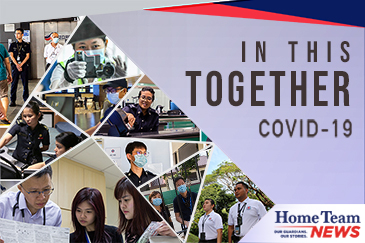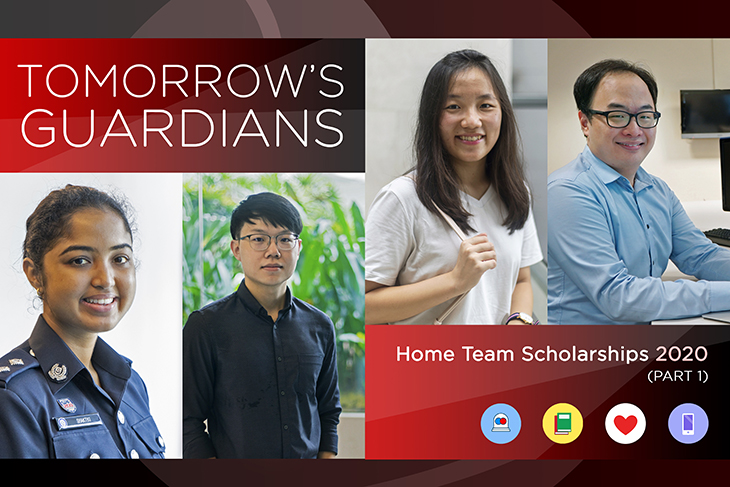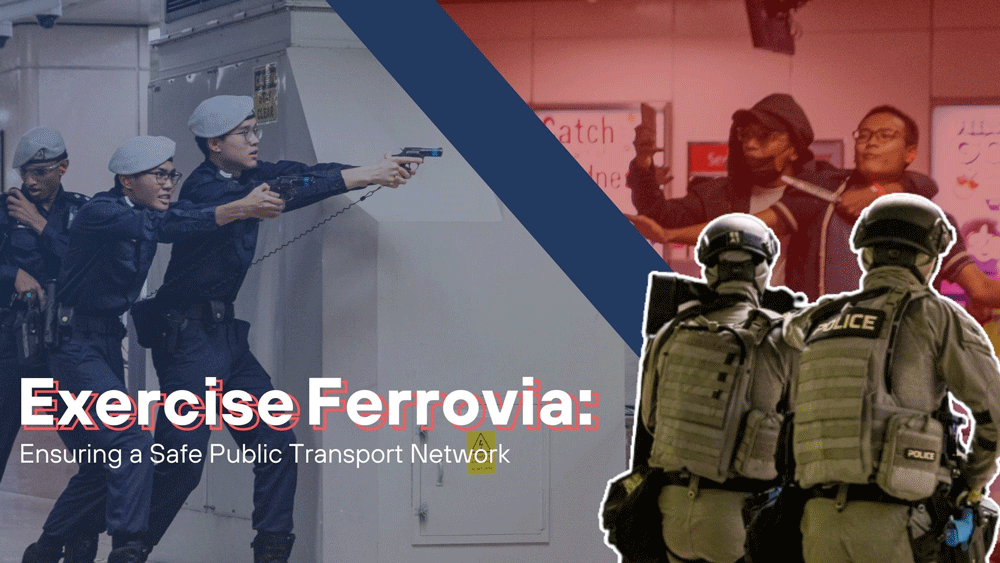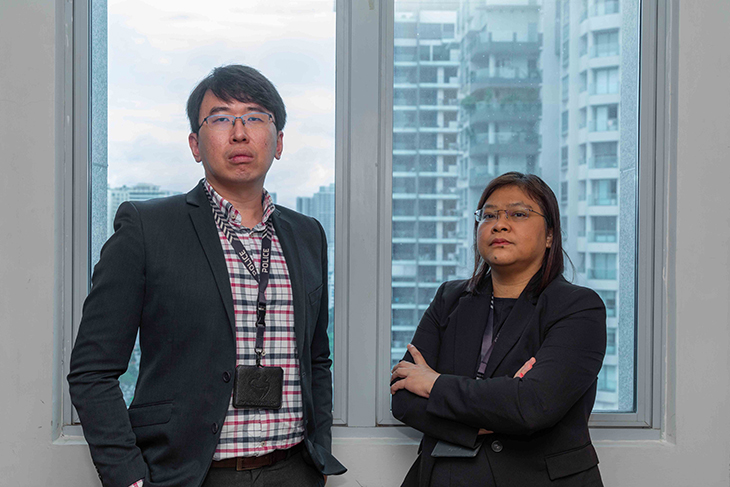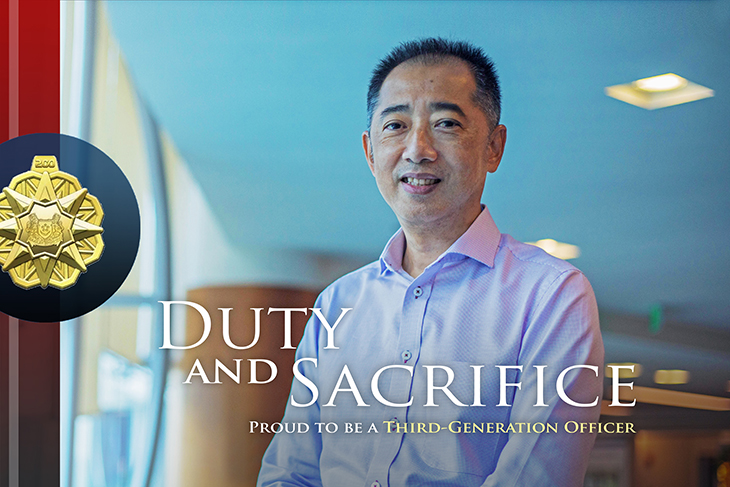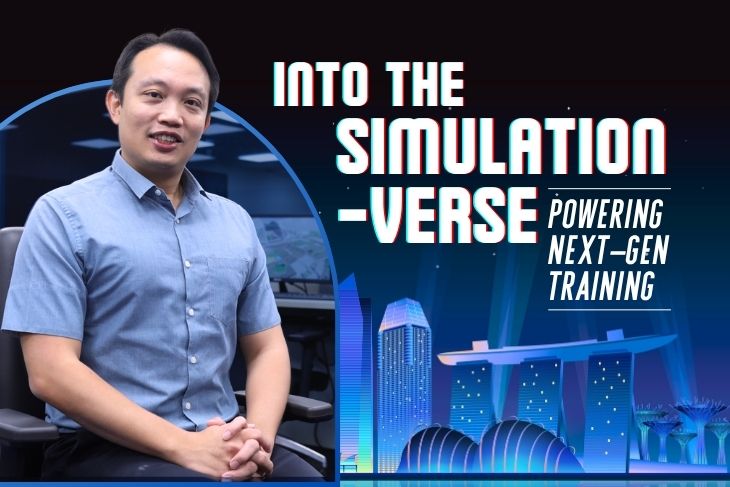
PHOTO & GRAPHIC: Amber Qua
The departure hall at Changi Airport hums with the steady rhythm of a typical day, as crowds queue at check-in counters and stream through departure gates.
Suddenly, a loud explosion shatters the calm atmosphere and the departure hall erupts into chaos. Moments later, ground reports from security officers on a hostage situation involving armed individuals reach the command post, where Home Team (HT) commanders spring into action to coordinate a joint response.
This is not a real terror attack, but one of several simulated training scenarios generated by the Home Team Simulation System (HTS2).
The HTS2 is a first of its kind simulation-based training system housed in the Home Team Simulation Centre (HTSC) at the Home Team Academy (HTA). Launched in 2018, the system leverages virtual reality to create a range of realistic scenarios for HT officers to train as though they are responding to real incidents, such as drone sightings, bomb threats and riots.
Enter the Simulation Architect
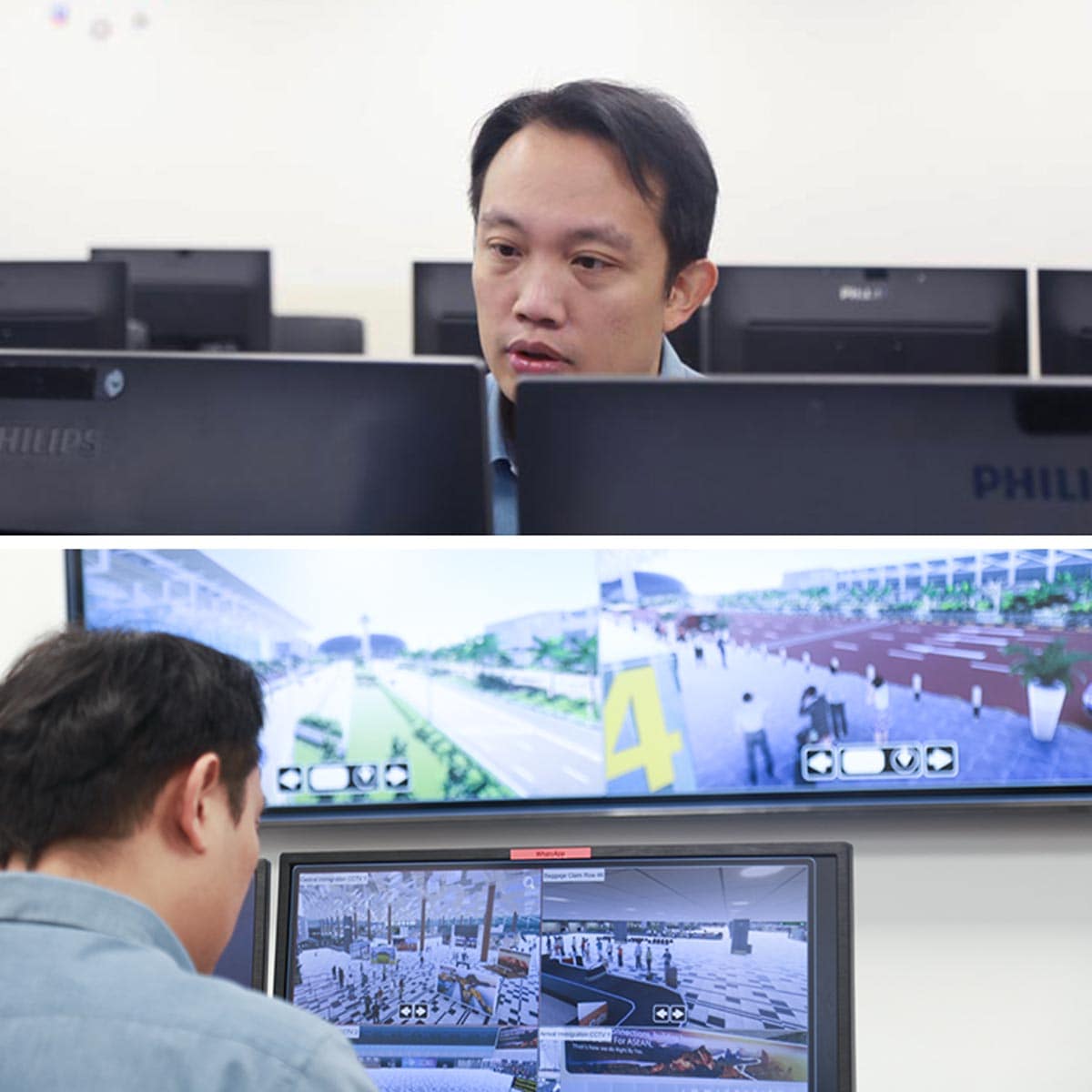
Seated in the mock command centre within the HT Simulation Centre, Supt Gilbert checks one of the virtual environments in the HTS2 modelled after a Changi Airport terminal. PHOTOS: Desiree Seah
Helming the development of the HTS2 and the rollout of HTA’s simulation training roadmap is Supt Gilbert Chen. As Senior Assistant Director for Capability Development at HTSC, his role involves sourcing the right technologies to strengthen HTA’s simulation capabilities, as well as championing simulation training across the HT.
“Since young, I’ve always been into technology and how it can help us. When I first got into simulation training, I was fascinated by its almost endless possibilities,” he recalled.
“We can recreate locations like the National Stadium, Orchard Road…places that would be almost impossible to train in without disruption to the public. Our goal is to make the simulation as realistic as possible, so that officers can train in situations which mirror what they will experience on the ground.”
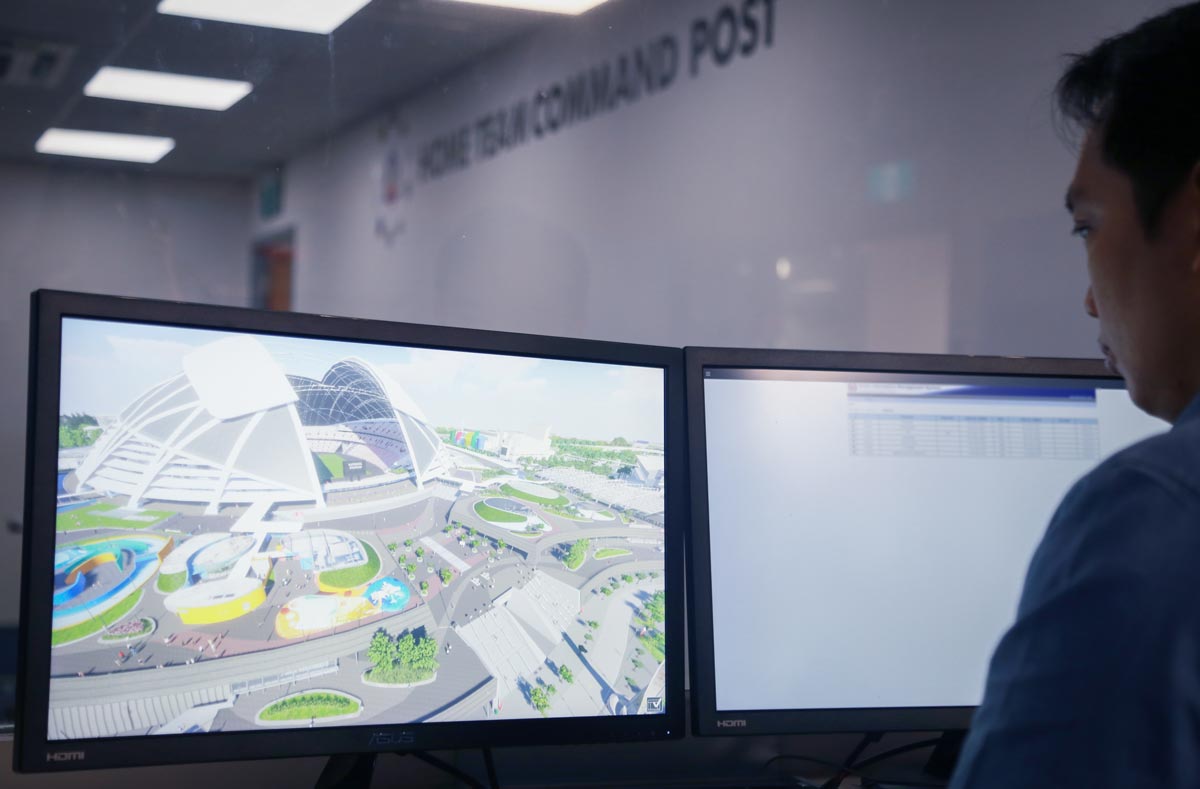
In a separate control room, Supt Gilbert conducts final checks on a virtual environment resembling the National Stadium in preparation for a training session. PHOTO: Desiree Seah
Having helmed operational roles in the Police Force for 15 years prior to joining HTA, Supt Gilbert brings his deep understanding of frontline operations to his current role. These insights inform how he works closely with various Home Team Departments (HTDs) to design joint training scenarios that meet their operational needs.
“Instead of each department running their own exercises in silos, we focus on integrated training to strengthen coordination and teamwork across the HT,” Supt Gilbert shared.
Bridging Different Needs to Achieve Mission Success
To ensure that the training remains relevant, realistic and tailored to each HTD’s unique operations, Supt Gilbert’s team regularly reviews and updates the training scenarios based on ground feedback, evolving threats and actual case studies.
However, not every request can be met with a ready-made solution. Supt Gilbert occasionally encounters requests for specific 3D environments which are not readily available or are likely to be utilised infrequently. In such circumstances, his team prioritises requests for environments which are likely to see sustained usage by multiple HTDs.
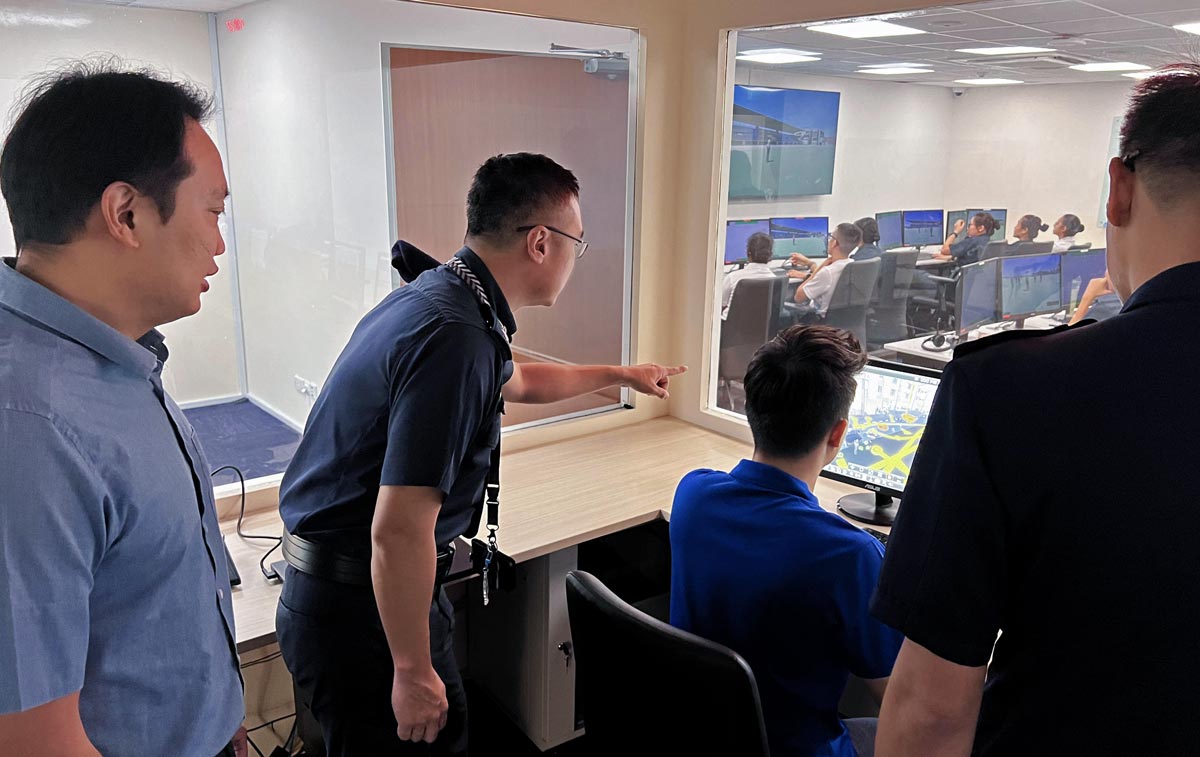
Supt Gilbert (left) and his team often work with other HTDs to ensure that training remains relevant, realistic and tailored to each department’s unique operational context. PHOTO: Home Team Academy
“Every HTD has their own set of priorities and operational concerns. Large-scale joint simulations provide a platform to surface those differences early,” he shared.
“It is not always smooth at the start. However, by working through and aligning our approaches, we learn how to deconflict effectively and ultimately operate as one Home Team to achieve mission success.”
Leading with Trust and Vision
Supt Gilbert’s contributions to leading his team in advancing simulation training and the adoption of emerging technologies across the HT were recently recognised at the HT Promotion Ceremony 2025. With an eye on the future, what stands out is not just his keen attention to emerging technologies, but his approach to leadership. He works tirelessly to ensure each member of his team is well-supported and receives equitable access to resources, in an environment where they feel confident in sharing their perspectives.
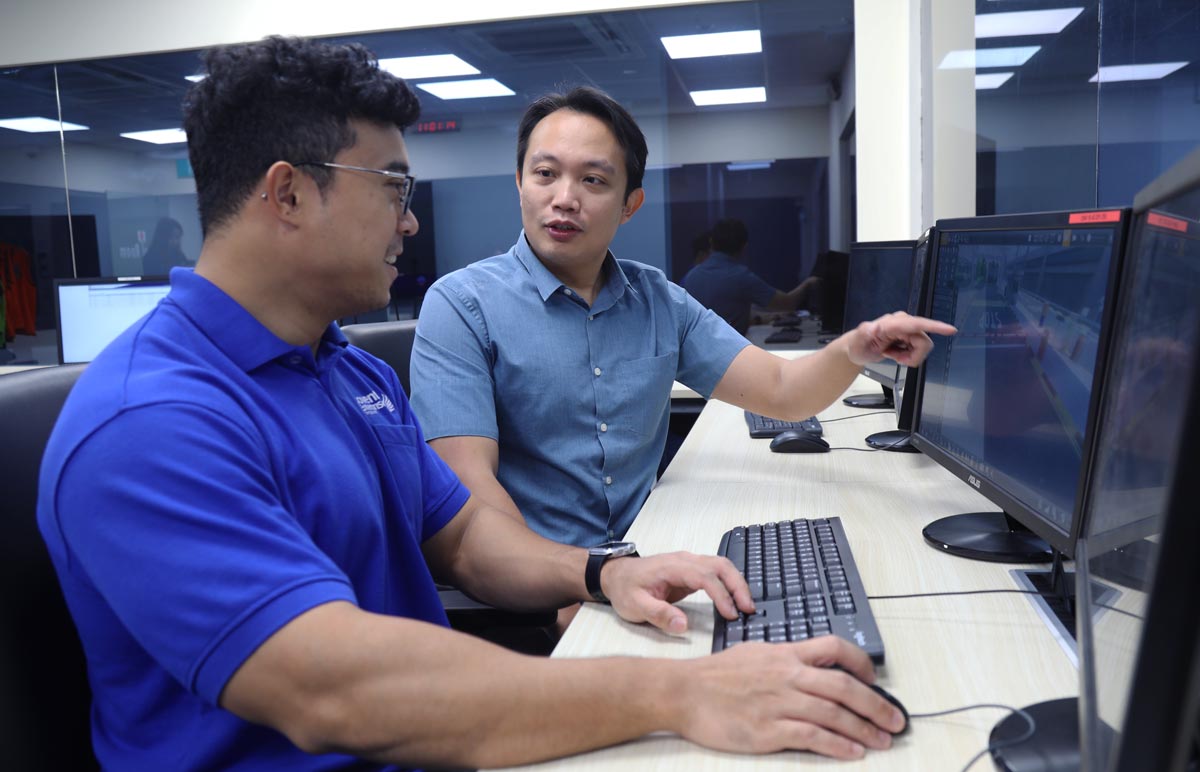
As a leader, Supt Gilbert believes in maintaining transparency and clear communication so that officers are aligned in their understanding of organisational goals. PHOTO: Amber Qua
What’s his secret to being a good leader? According to Supt Gilbert, it starts with clear and consistent communication. He explained: “When leaders are transparent and aligned in their messaging, it helps officers across different agencies understand not just their own roles, but how they fit into the bigger picture.”
“This understanding reminds us that we’re all working towards the same mission, just from different angles.”
Home Team Promotion Ceremony 2025
This year’s Home Team Promotion Ceremony was held on 17 April and saw 5,688 officers from across the Home Team promoted. They comprise regular officers from the Home Team Departments and statutory boards, Operationally-Ready National Servicemen from the Singapore Police Force and Singapore Civil Defence Force; and members of the Volunteer Special Constabulary and Civil Defence Auxiliary Unit.
Read the speech by Mr K Shanmugam, Minister for Home Affairs and Minister for Law, at the Promotion Ceremony.






